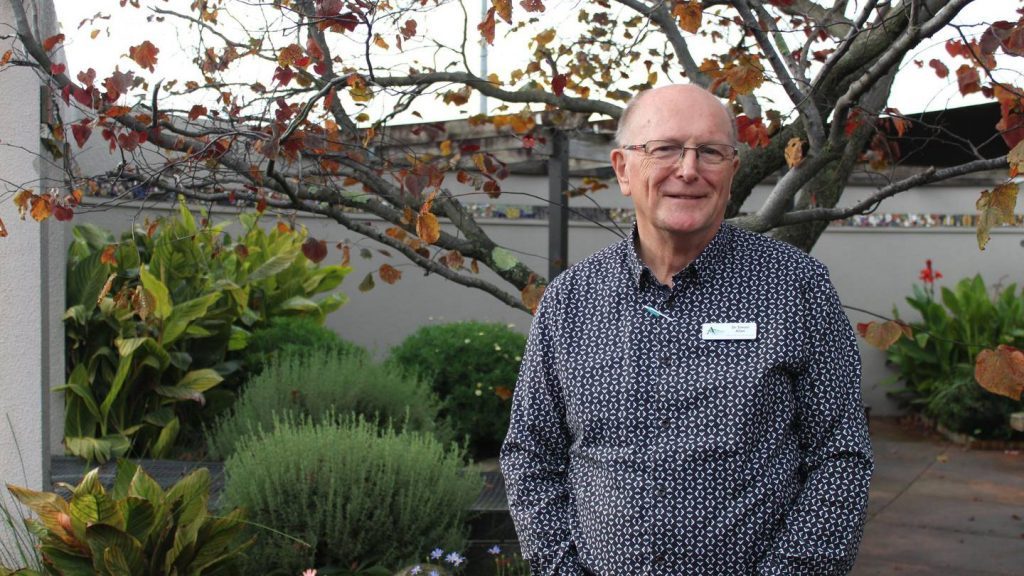Adapted from an article written by Judith Lacy, Editor, for the Manawatū Guardian. Image courtesy of the Manawatū Guardian.
Dr Simon Allan, Director of Palliative Care reflects on 30 years of care in our community.
There’s a misconception Arohanui Hospice is a sad, gloomy, depressive place, Dr Simon Allan says. It’s anything but, according to the Director of Palliative Care. And he should know as in November he will have worked at Arohanui for 30 years.
“Most people entering hospice discover it to be a happy, positive, encouraging environment. As Director of Palliative Care, I maintain and guide excellence and bring any new clinical innovation to the bedside and to the community. A third of my time is spent leading and the rest of the time I am a practising clinician – attending to patients.
First and foremost, the heart and soul of palliative care has not changed in 30 years. The vision is to keep people safe in their chosen home environment so if patients and families feel safe at home it means we’re doing a good job.” Dr Simon Allan says.
Dr Simon Allan says the biggest two changes in Palliative Care over the past 30 years are in medication. The first is the use of battery-operated syringe pumps. If someone is not able to take medication by mouth, the preferred route, then staff can offer pain and other forms of symptom relief through a syringe driver.
In the early day’s injections were administered on a regular basis, then over time staff moved to clockwork pumps then finally to battery operated syringe drivers, sparing patients a lot of injections. The second major change is the clever use of drugs - much more knowledge around the activity of different medications that can do a good job for symptom control.
“That means we’ve got better results from drugs, and we’ve got less side effects.”
Dr Simon Allan says the community buy-in over the years has been fantastic. Roughly about 50% of the hospice’s income needs to come from the community in order to continue to provide services at no charge to all patients and their families.
“As we have grown, the community has grown with us and has supported our effort year on year. Yes, it’s getting harder, but the community has shown fantastic support.”
“Our focus is on treating each and every person as an individual, who is always worthy of our care, compassion and aroha” says Dr Simon Allan.
30 years of care & aroha
- Only 31 percent of patients are admitted into the inpatient unit, most care is delivered by specialist palliative care nurses who visit patients in their own homes and work alongside aged residential care providers to support older patients.
- It is a myth that patients come into hospice to die, most patients prefer to die in the comfort of their own home, surrounded by loved ones, their pets and personal treasures. Of those that have a stay in our inpatient unit, around 75% will return home again after receiving care.
- Arohanui Hospice is partially funded by the Ministry of Health, receiving around 54% of operating costs from the District Health Board Contracts. The remaining 48% or $3.2 million required is fundraised each financial year.


